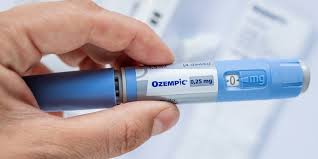Cravings are a natural part of eating behavior, but for many people struggling with weight gain or diabetes, cravings can feel uncontrollable. That’s why Ozempic injection are so powerful — they help regulate not just appetite, but also the brain’s reward system connected to cravings.
But how do cravings really change on Ozempic? What’s normal, and when should you be concerned?
Let’s break it down.
What Are Cravings?
Cravings are intense desires for specific foods, often high in:
-
Sugar
-
Fat
-
Salt
They are usually not driven by physical hunger. Instead, they stem from: -
Habit
-
Emotions
-
Hormonal signals
-
Brain reward pathways
How Ozempic Impacts Cravings
Ozempic (semaglutide) mimics the action of a natural hormone (GLP-1) that:
-
Regulates appetite
-
Slows down stomach emptying
-
Signals satiety to the brain
-
Interacts with dopamine and reward centers
Because of this, many people notice:
-
Cravings decrease or disappear
-
Food is less emotionally compelling
-
They eat less and feel full faster
Cravings: What’s Normal on Ozempic?
Here’s what’s considered normal when you’re using Ozempic:
✅ 1. Reduced Interest in Food
You may no longer obsess over meals or snacks. The desire for constant eating tends to drop.
✅ 2. Cravings Fade Gradually
For many, it’s not instant. Cravings for sugary, salty, or fatty foods diminish over a few weeks as the brain and gut adapt.
✅ 3. Smaller Portions Feel Satisfying
With slower digestion and stronger satiety signals, even small meals can feel filling.
✅ 4. You Still Enjoy Food, But Don’t Feel Compelled
You might want a bite of cake at a birthday party — but don’t feel driven to eat the whole thing.
What’s Not Normal on Ozempic?
Sometimes, people may experience unexpected reactions. Here’s what may be concerning or unusual:
❌ 1. No Reduction in Cravings at All
If you’ve been on Ozempic for 4+ weeks with zero change in cravings, talk to your provider.
Possibilities include:
-
Incorrect dose
-
Resistance to GLP-1
-
Lifestyle habits overpowering the medication
❌ 2. Sudden Increase in Cravings
If cravings suddenly intensify, consider:
-
Hormonal fluctuations
-
High stress levels
-
Sleep deprivation
-
Under-eating or skipping meals
These can override Ozempic’s effects.
❌ 3. Cravings Shift to Other Substances
Some users report increased cravings for:
-
Alcohol
-
Nicotine
-
Caffeine
This might reflect a shift in reward-seeking behavior and may require further guidance.
Types of Cravings on Ozempic
| Craving Type | What to Expect on Ozempic |
|---|---|
| Sugar Cravings | Significantly reduced; sweets may lose appeal |
| Carb Cravings | Often decrease; bread/pasta become easier to limit |
| Fat Cravings | May still occur but usually feel less urgent |
| Emotional Eating | Becomes more manageable due to reduced food fixation |
| Snacking Urges | Drop significantly as satiety lasts longer |
Why Cravings Still Happen on Ozempic
Even with the medication, some cravings may linger due to:
-
Emotional triggers (stress, boredom, sadness)
-
Habitual patterns (late-night snacking, mindless eating)
-
Environmental cues (smelling food, seeing ads)
-
Nutritional gaps (low protein or fiber intake)
Tips to Manage Lingering Cravings
✅ 1. Prioritize Protein and Fiber
These nutrients naturally boost satiety. Include:
-
Eggs, chicken, fish, tofu
-
Beans, lentils, whole grains
-
Vegetables with each meal
✅ 2. Stay Hydrated
Thirst is often mistaken for hunger. Aim for 2–3 liters of water daily.
✅ 3. Plan Balanced Meals
Don’t skip meals — this often backfires. Instead, create:
-
Regular eating windows
-
Nutrient-dense, portion-controlled meals
-
Healthy snacks when needed
✅ 4. Identify Emotional Triggers
When a craving hits, ask:
“Am I really hungry, or just triggered by something else?”
Use distraction, journaling, or a quick walk to break the cycle.
Mental Health and Cravings
Cravings are tightly connected to mental well-being. If you notice:
-
Emotional eating returns
-
Binge urges reappear
-
Anxiety tied to food choices
…then consider working with a therapist, coach, or nutritionist.
Ozempic helps the body — but the mind still needs support.
How Long Until Cravings Completely Disappear?
There’s no universal timeline, but many users report:
-
Week 2–3: Appetite drops
-
Week 4–6: Cravings noticeably decline
-
Month 2–3: Stable control over eating behavior
Consistency matters. Skipping doses or irregular eating can delay progress.
Conclusion: Know What’s Normal and Take Control
Cravings are complex — but Ozempic injections give you the upper hand.
Understanding what’s normal vs. what needs attention helps you:
-
Set realistic expectations
-
Avoid panic during temporary setbacks
-
Stay on track toward your health goals
If cravings persist or return strongly, speak with your provider to adjust your plan.

